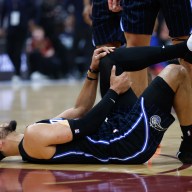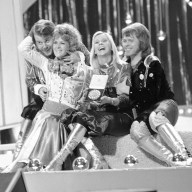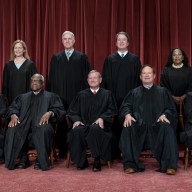brett popplewell/canadian press
The Wheatsheaf, near London’s Oxford Circus, doesn’t overplay its literary connections. Dylan Thomas met his wife in the Wheatsheaf, and George Orwell often ate supper there.
There’s a chalkboard on the wall of the Spaniards Inn that states a young John Keats once sat in the pub’s beer garden and worked on his classic poem, Ode To A Nightingale. Keats died two years later, but his portrait and memory still haunt the 400-year-old North London pub.
Bram Stoker, Lord Byron, Robert Louis Stevenson and Evelyn Waugh are all said to have drunk and written at the pub, while today a lesser known group of modern poets gather there once a week to recite their own stanzas and those of bards long dead.
These poets say they chose the unspoiled booze house for its convenience and authentic atmosphere. But the bar’s manager, David Nichol, says writers and tourists seem to enjoy drinking with the ghosts of literature past.
“I think it’s probably quite a nice feeling to be sitting and drinking in the same spot where Keats or Byron may have dreamt up their poetry. Writers must find it quite inspiring,” Nichol says.
With its world-famous attractions and top-rank museums and galleries, London has always been a popular tourism destination. But for those with a literary mind and an unquenchable thirst, the city has much more to offer. Many of its pubs have intriguing literary connections.
Keats may have written at the Spaniards Inn, but he was born in another pub in central London — the Swan & Hoop, since renamed the John Keats at Moorgate.
Dylan Thomas was in a New York tavern when he drank himself to death, but the Welsh poet met his wife while drunk in the Wheatsheaf, the same unassuming pub where George Orwell often ate a late supper.
Overlooking a side-street near Oxford Circus, the Wheatsheaf doesn’t overplay its literary links.
Neither does the Lamb, a classy Victorian pub with a wood-panelled ceiling and a finely decorated bar, where Dickens and Virginia Woolf gathered decades apart.
“It’s very refreshing that they don’t make a big thing about it,” says Sophie Slade, curator at the Dickens House Museum.
Other pubs are not so modest. Near Tower Bridge there’s the Dickens Inn. A brewery in Dickens’ day, the pub has little to do with the writer despite its name. William Shakespeare’s name has also been used by many pubs across town, as has that of Arthur Conan Doyle’s famed detective, Sherlock Holmes.
While these pubs have fostered their own literary connections, Slade says others “are mentioned in novels and then they sort of play that up to capitalize on the author’s fame.”
Near the south end of London Bridge stands the George Inn, a well-aged pub with a proud and rich literary history. Rebuilt in 1676 after the original pub burned down in the Great Fire, the George is the only remaining example of many such coaching inns in the area, the most famous being the Tabard where Geoffrey Chaucer began his Canterbury Tales in 1388.
The Tabard is gone, but the George has survived, albeit with several alterations, and was mentioned by Dickens in Little Dorrit.
The original George is also said to have been a watering hole for Shakespeare, who would meander over from the nearby Globe Theatre.
The pub is set back on a cobblestoned alley from the main road to London Bridge and is an attraction on several organized London walking tours.
Historian Guy Cuthbertson of Oxford University says a lot can be said of writers by their choice of pub.
“If you were a middle-class writer, the pub was a classless environment and a way to escape from your background and to get a touch on everyone’s background.”
| pub tour |
|
For details on arranged walking tours of London’s literary sites, see www.walks.com.
Take your own tour using the London Underground as your chariot. The Spaniards Inn is on Spaniards Lane near Hampstead Station; the Wheatsheaf and the Museum Tavern (where Arthur Conan Doyle and Karl Marx used to drink) are nearest to Tottenham Court Road Station; the Lamb is on Lamb’s Conduit Street near Russell Square Station; the John Keats at Moorgate is next to Moorgate Station; and the George Inn is not far from London Bridge Station.
|
















